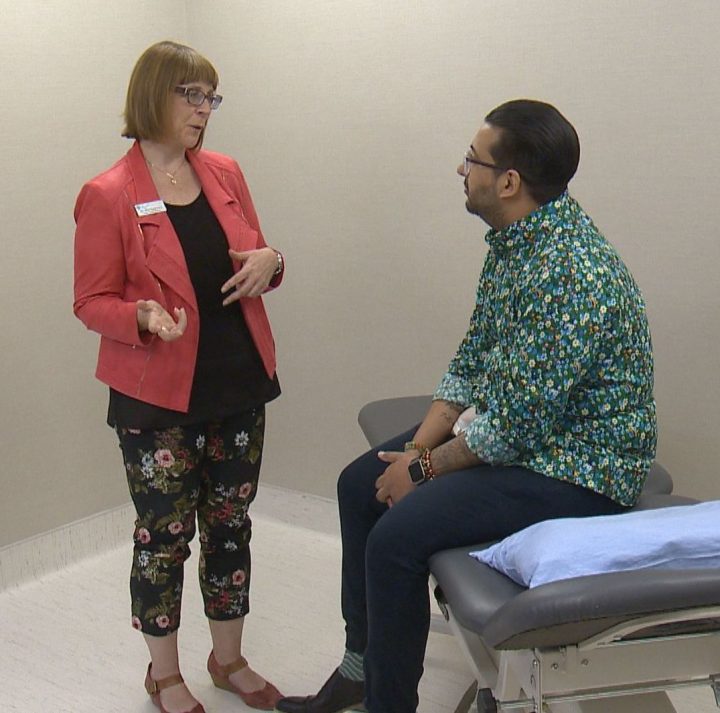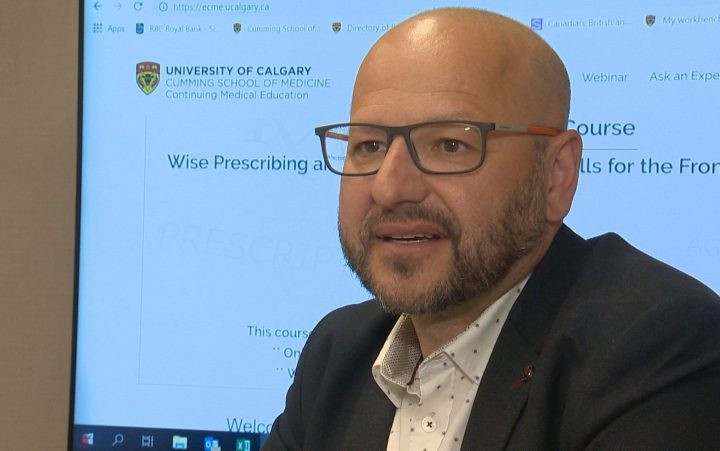The University of Calgary and Alberta Health Services launched a course for doctors to learn how to properly prescribe and taper patients off opioids on Monday.

Wise Prescribing and De-prescribing: Opioid Skills for the Frontline Clinician is five hours of online modules (including podcasts and interview clips) and two three-hour workshops (working through and reflecting on cases).
How to tailor and taper
The voluntary course is funded by the Alberta College of Physicians and Surgeons.
The course also highlights that doctors should recognize dose escalation as a problem because tolerance builds up over time.
“What we’d really like to see is that physicians are aware of the issues around prescribing opioids, initiate them safely, and for patients that are receiving high doses of opioids, that they have an ability to work with a physician to taper them, hopefully, off of opioids or at least into a dose where we think there aren’t the safety concerns,” Burak said.
Dr. Lori Montgomery said the course fills a crucial gap by giving physicians an endgame.
“When we teach young doctors, we spend a lot of time training them on how to start medications,” she said. “We don’t really spend too much time teaching them how to stop… That’s like teaching somebody to ride a bike and not teaching them how to use the brakes. And then we wonder why we got ourselves into trouble with opioids.”
The course teaches doctors how to have conversations with patients and tailor the plan for their goals. The in-person approach helps clinicians apply that knowledge.
If you’re taking opioids long term, a new risk appears — one that takes both doctors and patients by surprise.

Get weekly health news
“One of the things that people don’t necessarily anticipate is that when you’ve been taking an opioid medication for a long time, it can actually start to make your pain worse,” Montgomery said.
Addicted vs. physically dependent
Montgomery is the medical leader of the Calgary Pain Program, a multidisciplinary team helping people with chronic pain that started as a pilot project in 2000.
She said family doctors offered feedback two years ago, saying they are struggling on a daily basis to help patients who want to taper off opioids.
Once the money was in place, it took six months to develop and record the course content.
The course focuses on doctors who have patients without an opioid use disorder but who have been prescribed high doses.
There is a difference between patients who have addiction versus patients who are physically dependent on the medication, according to Montgomery.
“There is a completely different treatment protocol for somebody with addiction that involves things like Suboxone, methadone and treatment programs like that. Your first choice with a patient with addiction would not be tapering,” she said.
No longer ‘handcuffed’
Shan Rahim, 35, is tapering off opioids after being on them for five years for a chronic pain condition. He built up a tolerance, always requiring a higher dose every six months.
“The confusion between addiction and body dependence kind of got muddied,” he said. “So there was a question as to why I needed opioids, whether it was helping me, and if it was helping me, what needed to change?”
At first, Rahim was apprehensive about the tapering process, wondering how his body would adjust.
That feeling eventually turned into comfort and confidence.
“You can have opioids work for you while trying to break the tolerance that your body has built, hopefully working towards one day being opioid free,” he said.
Tapering off the drug changed his life; he said it improved his well-being and made him feel like a better person, husband and father. Rahim is not as “handcuffed” by the opioids now, he said.
“It really made me realize that there is something to be proud about getting yourself to a place where you’re not so dependent on opioids and you’re not the only one,” he said.
Rahim said education can only improve the doctor-patient relationship.
“Hopefully, with this education that’s being rolled out, more patients will be more forthcoming with their family doctor and their family doctor will be more receptive to building a plan that suits the patients and help them achieve their goal,” he said.





Comments